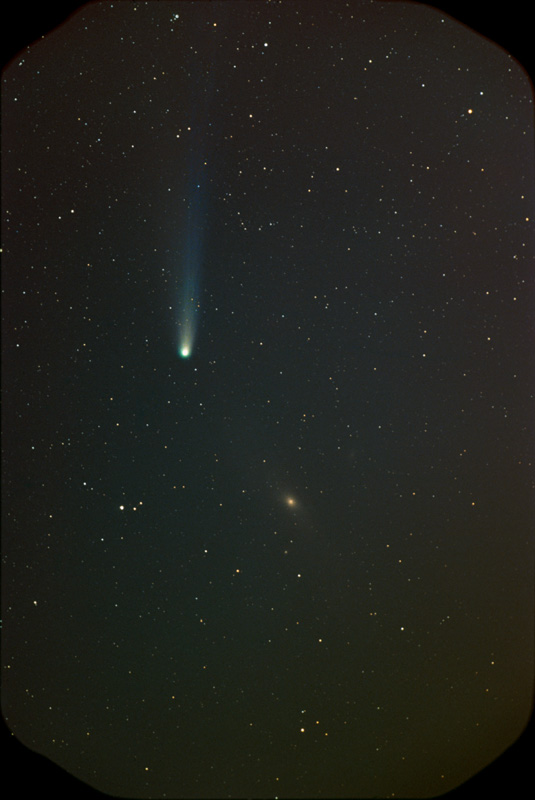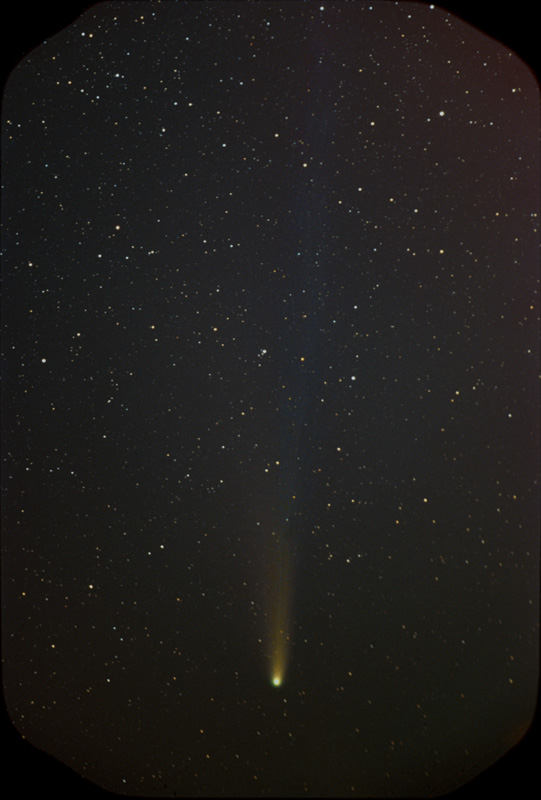|
This very close approach of two bright celestial objects is unusual to say the least. The left image shows the comet sitting on the eastern edge of M31, and the image on the right taken 5 minutes later of the entire comet after M31 had set behind the distant mountains. The problem was the extremely low altitude at which this event was occurring, only 5 degrees above the distant horizon at the end of twilight. The yellow extinction band of dust makes the lower half of each image quite brownish in color, and has removed most of the blue arms of the Andromeda galaxy. In the image at the right, you can see how the comets head has become extremely yellow as compared to the left image when it was much higher in the sky. I used Elite 100 film which is more blue sensitive as to capture the ion tail in the comet more clearly. In the right image, there is a clear separation of the yellow dust tail and the bluish Ion tail. The comet is around magnitude 3.5 or so. Instrument: 8" f/1.5 Celestron Schmidt Camera Platform: Portable German Equatorial Film: Elite 100 pushed 1 stop CCD Autoguider: Manually guided Exposure: 4 mins Filters: UV Location: Payson, Arizona Elevation: 5150 ft. Sky: Seeing 8/10, Transparency 8/10 Outside Temperature: 10 C Processing: Maxim DL, Photoshop, PW Pro.
|
||||
|
|
||||
|
FastCounter by bCentral |

